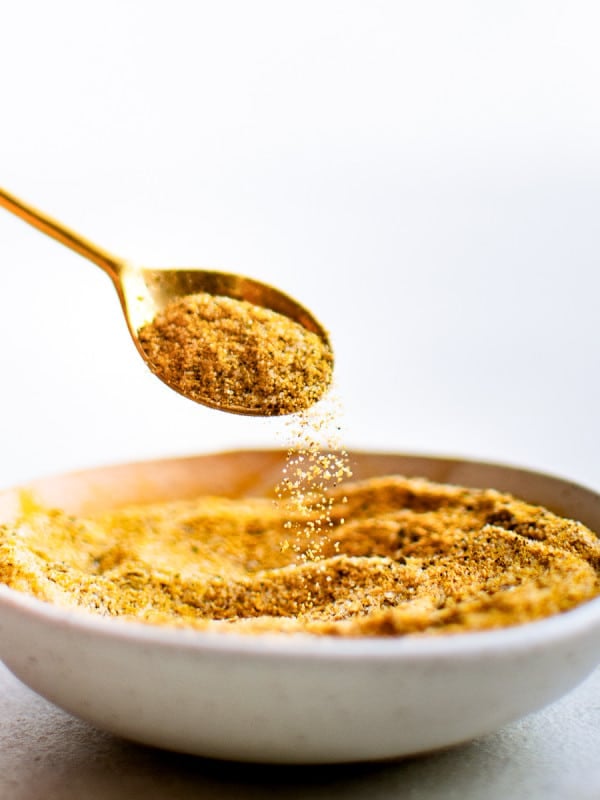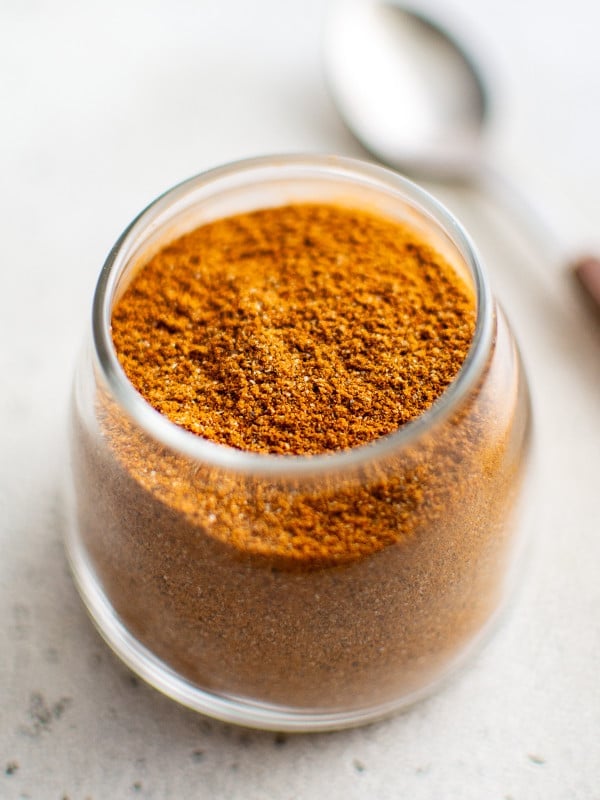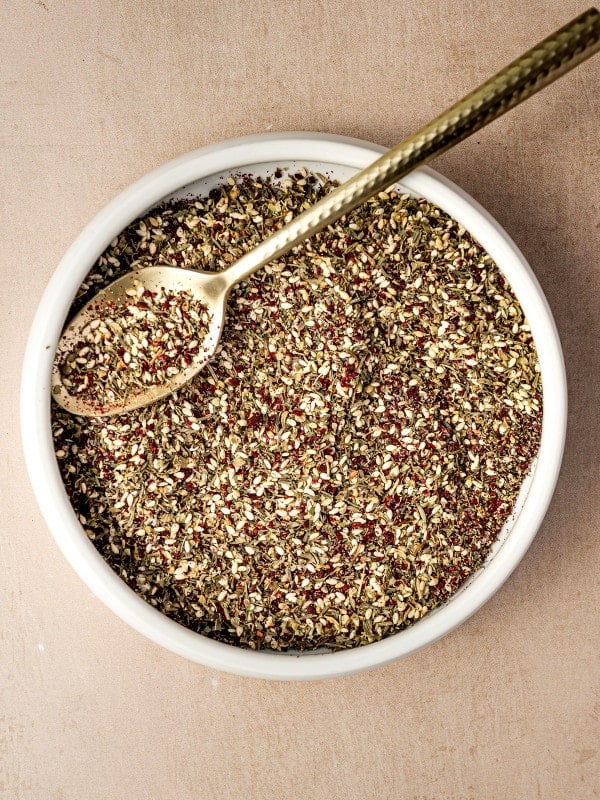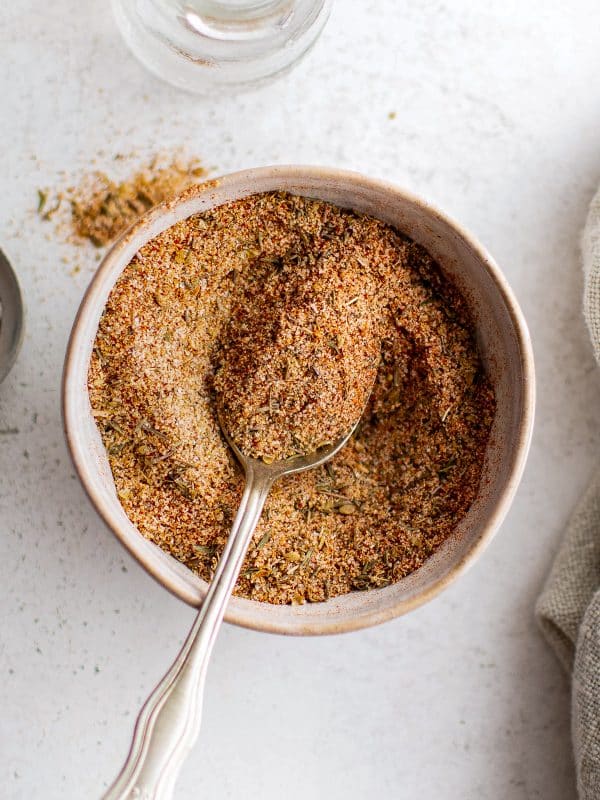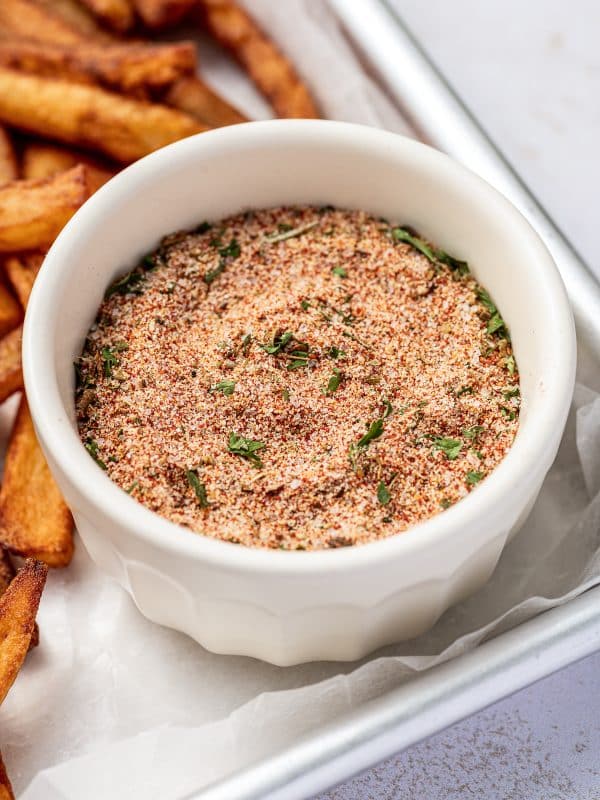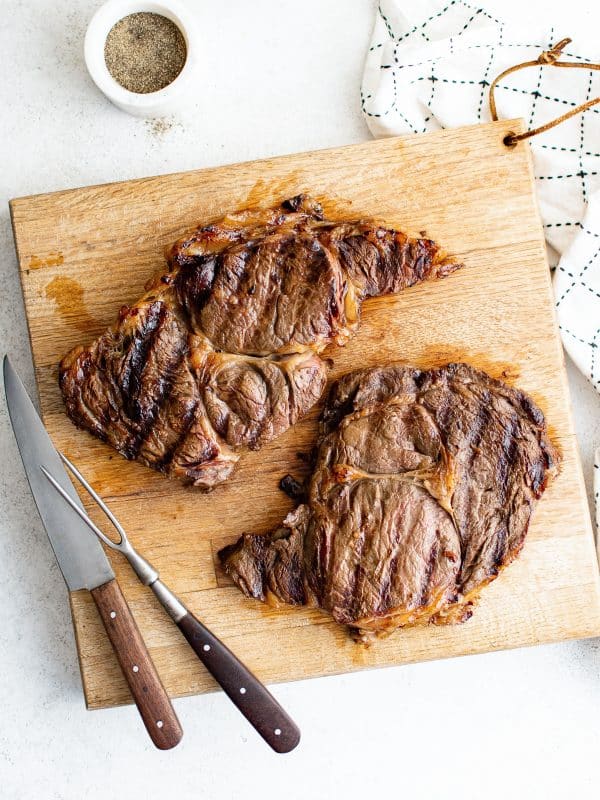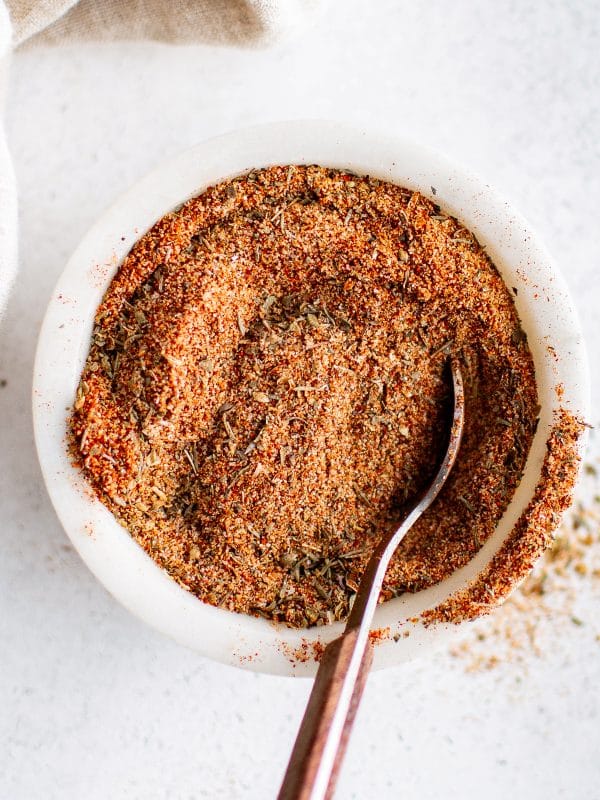This post may contain affiliate links. See my disclosure policy.
Looking to kick your recipes up a notch? This quick and easy Homemade Cajun Seasoning is made with simple, everyday spices for a delicious blend of smoky, spicy, and earthy flavors. Add it to meats, pasta, seafood, and more!

Cajun seasoning is my go-to seasoning blend. It’s bold, flavorful, and guaranteed to deliver a pleasant, though punchy, “kick” to the tastebuds. It can range from mild to spicy, depending on how much cayenne pepper you add, and only takes a couple of minutes to make. It’s essential in Louisiana classics like Jambalaya and Gumbo, and adds life to everyday favorites like baked chicken breasts and creamy salmon pasta.
Today, I’m sharing how to make my favorite homemade Cajun seasoning blend. It’s a recipe I return to over and over again when I’m craving something extra flavorful. The best part? The ingredients are super simple. Honestly, you probably have most of them in your spice drawer already.
What’s in Cajun Seasoning
Cajun seasoning is a bold and flavorful spice traditionally used in Louisiana Cajun cuisine. Recipes vary, but it typically includes three main components – dried herbs, bold spices, and a bit of heat. This recipe includes the following ingredients:
- Garlic powder
- Onion powder
- Smoked paprika
- Cayenne Pepper
- Black pepper
- Celery Salt
- Dried Thyme
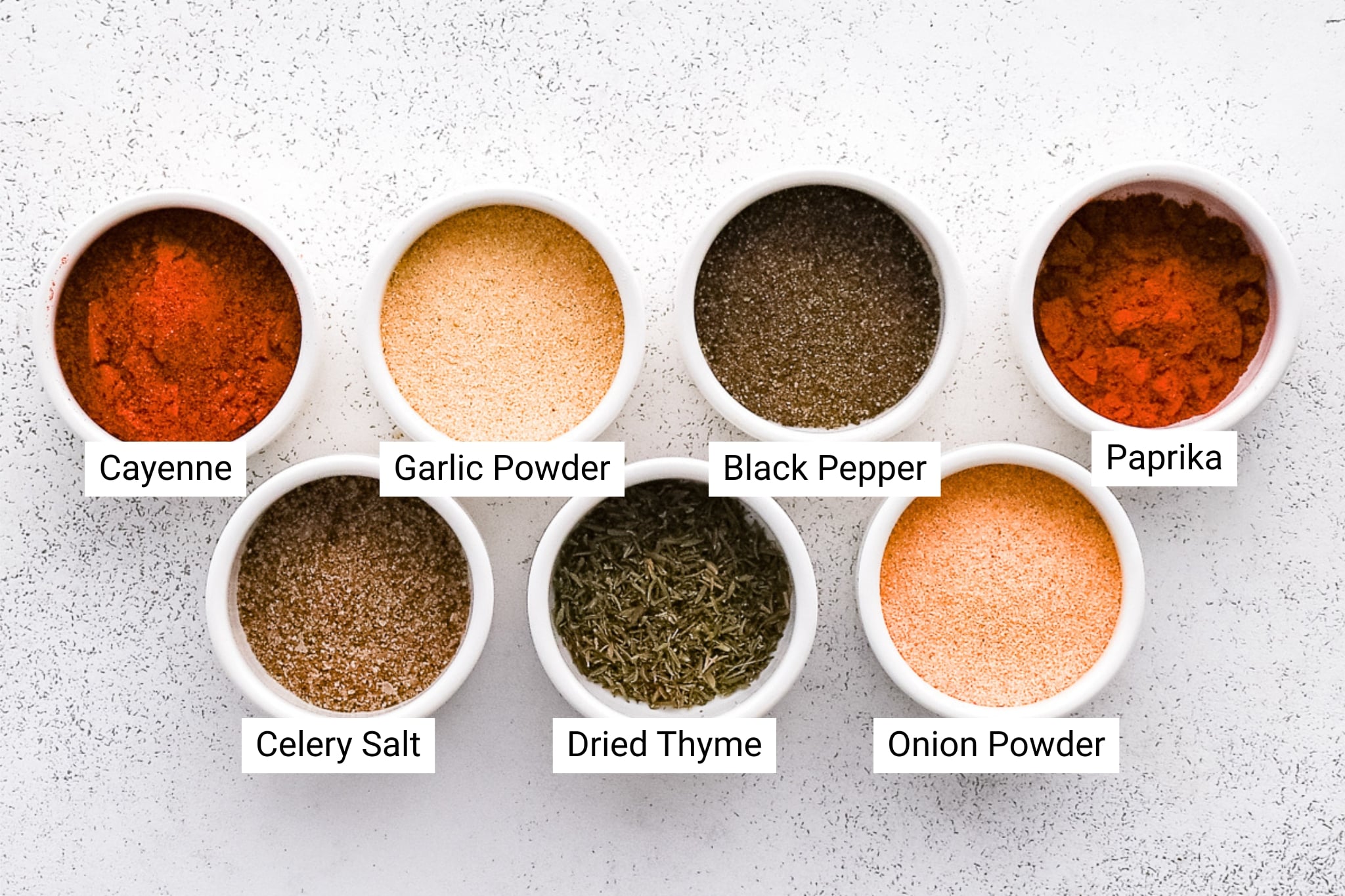
I find this Cajun seasoning recipe to be moderately spicy. You can easily modify it to be more or less spicy by adjusting the amount of cayenne pepper. Add less to make it less spicy, or add more to make it more spicy.
You can find the printable recipe with measurements in the recipe card below.
How to Make Cajun Seasoning
In a small bowl, whisk together the garlic and onion powder, smoked paprika, cayenne powder, black pepper, ground celery salt, and dried thyme. Transfer to an airtight container and store in a cool, dark place for up to 6 months.
- This recipe makes approximately 1/3 cup of Cajun seasoning.
Recipe Tips and Variations
Grind your herbs: To keep your seasoning smooth and well-blended, grind the dried thyme (and any other coarse herbs) using a mortar and pestle or spice grinder. This ensures even flavor distribution, which is especially important if using it as a rub or in sauces. You could also give the whole seasoning blend a quick whirl in a spice grinder or mini food processor to unify texture.
Skip the salt: To control sodium levels, omit both the celery salt and wait to add salt, later, when seasoning the final dish. You can replace the celery salt with about a half teaspoon of ground celery seed.
Customize. This recipe is a fantastic base. Feel free to enjoy it as is, or tweak it to suit specific dishes. For example:
- Add more thyme or oregano for shrimp étouffée or red beans and rice
- Add extra paprika (or add cumin) for grilled meats or shrimp
- Add a little brown sugar or chili powder for BBQ-style rubs or sauces

How to Use Cajun Seasoning
Cajun seasoning is, without question, the most versatile seasoning blend in my pantry. I use it to season Louisiana classics like jambalaya, Cajun dirty rice, and gumbo, but its bold, punchy flavor goes far beyond the bayou. Use it to:
- Season meats and seafood. For that unmistakable Southern kick, sprinkle a little Cajun seasoning on shrimp, chicken, pork, or fish. I added it to pan-seared salmon bites in this creamy salmon pasta for the perfect, punchy contrast to the rich Alfredo sauce. You can also sprinkle it on these quick and easy air fryer salmon bites.
- Toss with vegetables. Roasted veggies come alive with a sprinkle of Cajun spice. Some of my favorite veggies include roasted cauliflower, garlic roasted potatoes, baked sweet potato fries, and definitely fried okra.
- Stir it into sauces and soups. Add a little kick to creamy dips like this remoulade sauce or soup like this simple chicken soup.
Have fun experimenting with this seasoning you may even discover a few new ways to use it along the way. Enjoy!
Cajun vs. Creole Seasoning
While Cajun and Creole seasonings both originate from Louisiana and share a several common ingredients, they reflect two distinct culinary traditions. Cajun seasoning is typically spicier and more rustic, built around bold spices and minimal herbs. Creole seasoning, on the other hand, is more refined and aromatic, with a broader mix of herbs that add complexity and depth.
Can the two be used interchangeably? I can usually use one blend as a substitute for the other, especially when comparing store-bought seasoning blends. With that said, remember the following:
- Cajun seasoning is all about big, bold flavor, heat, and smokiness. Use it to make spicy dishes like blackened chicken or grilled shrimp.
- Creole seasoning is reserved, milder, more herbaceous flavor. It’s better suited for tomato-based stews, sauces, or proteins like fish or eggs.
More Homemade Seasoning Blends
If you make this Cajun seasoning recipe, I’d love to hear how it turned out in the comment section below! Your review will help other readers in the community. And if you’re hungry for more delicious food inspiration and exclusive content, join my free newsletter here.
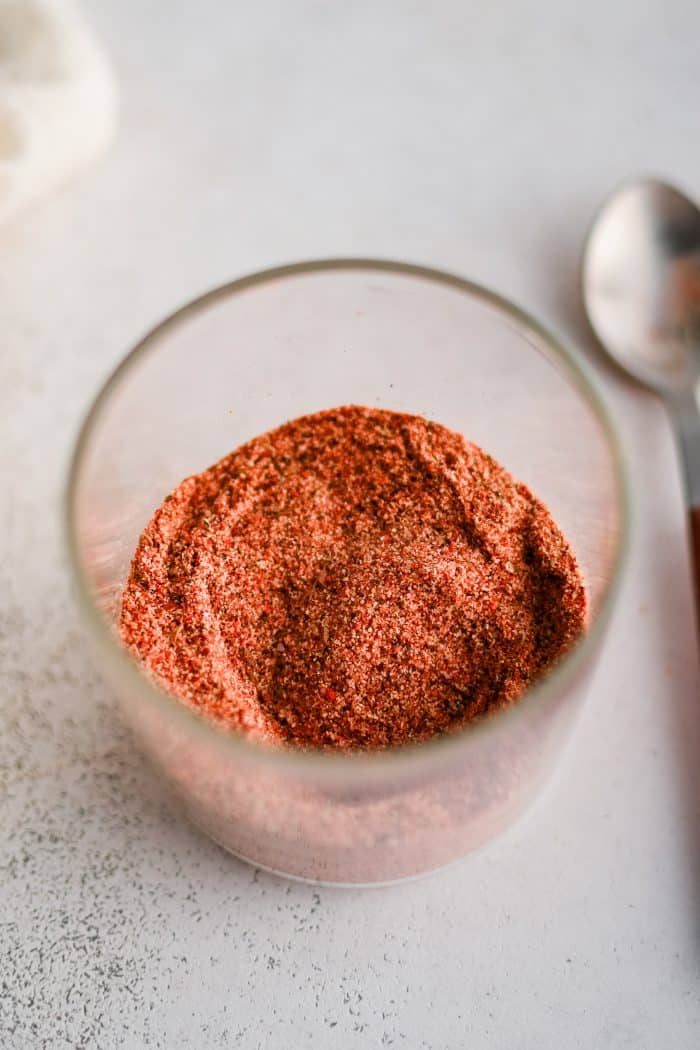
Cajun Seasoning Recipe
Ingredients
- 1 tablespoon garlic powder
- 1 tablespoon onion powder
- 1 tablespoon smoked paprika
- 1 teaspoon cayenne pepper, more or less to taste
- 1 teaspoon Black pepper
- 1 teaspoon ground celery salt
- 1 teaspoon dried thyme
- salt, optional, to taste
Instructions
- Whisk all of the ingredients together in a small bowl. Keep stored in an airtight container, away from direct sunlight, and at room temperature for up to 6 months.
Notes
- As written, this recipe is moderately spicy. Control the overall heat level by adding more or less cayenne pepper, to taste.
- To make this recipe salt-free, substitute the celery salt with approximately ½ teaspoon ground celery seed.
Nutrition
Nutrition information is automatically calculated, so should only be used as an approximation.

